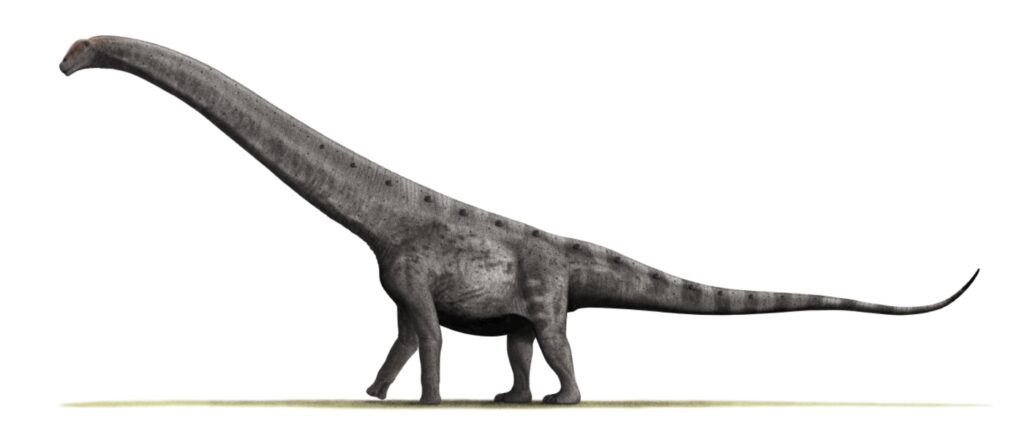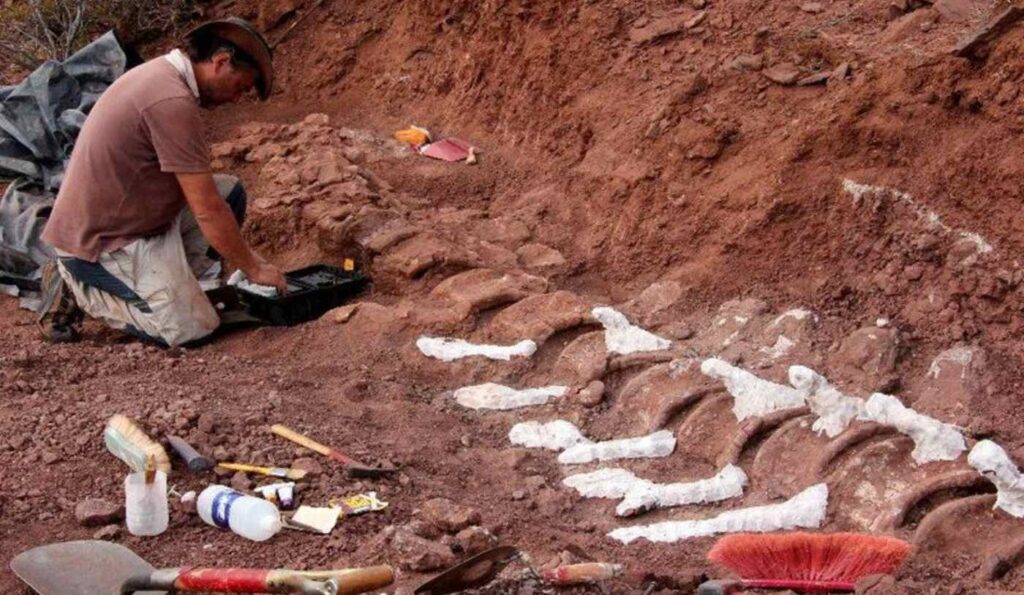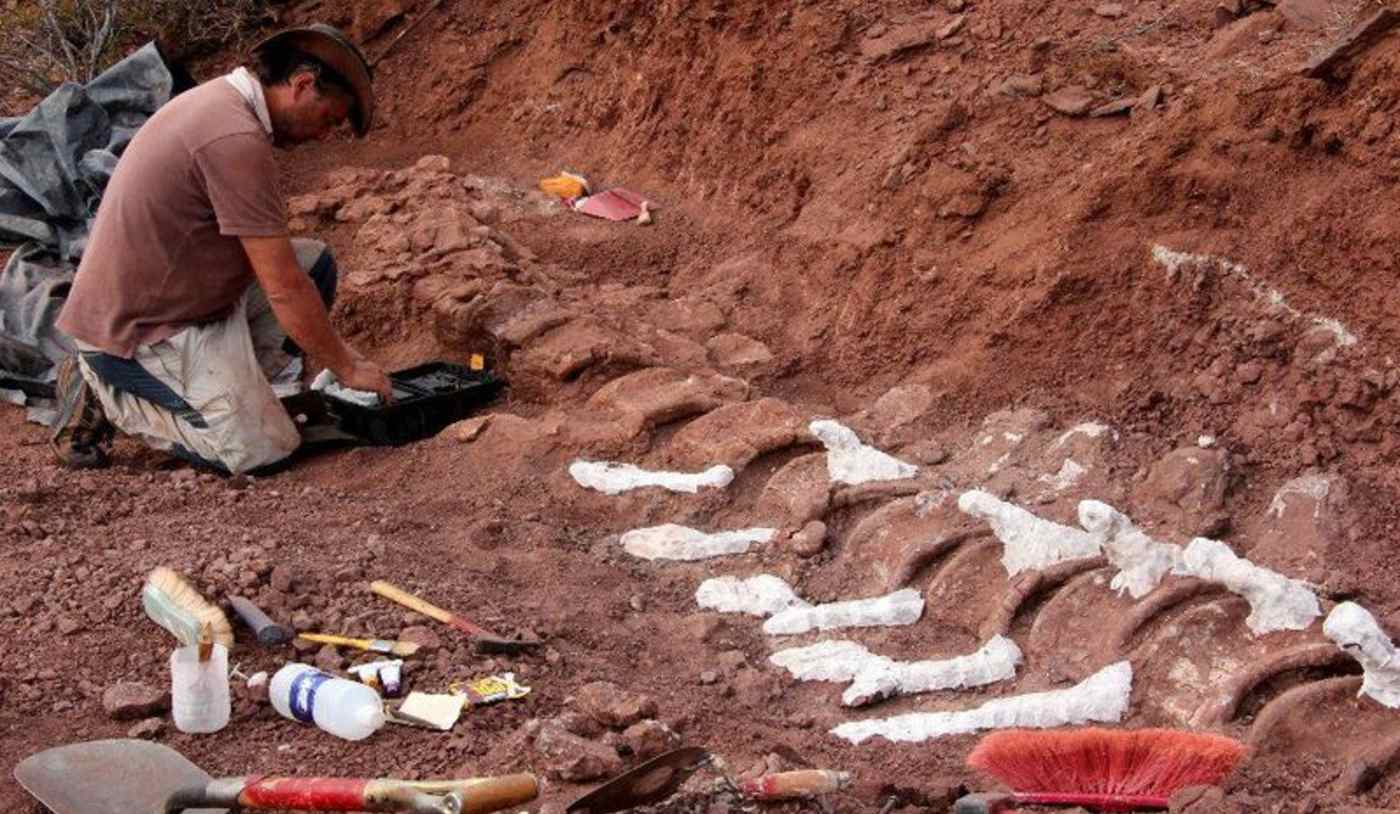A discovery nine years in the making may have yielded the largest land animal in our planet’s history.

The bones, found in 2012 in Argentina, consisted of 24 humongous tail vertebrae as well as parts of the pectoral girdle and pelvis which indicate they could be a new member of the species titanosauria, a group of sauropod dinosaurs that just wouldn’t stop growing.
60-20 million years before a meteor ended their reign, gigantic dinosaurs were really hitting their stride. In the landmass which formed modern-day South America, titanosauria were reaching heights and lengths never before or since seen on Earth, as members such as Patagontitan, named after Patagonia where it was found, could reach up to 76 tons and grow to 122 feet from nose to tail.
Now a titanosaur from 98 million years ago, unearthed in the Candeleros Formation in Argentina’s Neuquén Province, is threatening to take the crown of biggest sauropod dinosaur ever found.
“It is a huge dinosaur, but we expect to find much more of the skeleton in future field trips, so we’ll have the possibility to address with confidence how really big it was,” Alejandro Otero, a paleontologist with Argentina’s Museo de La Plata, told CNN via email.

Load-bearing bones such as the femur or humerus would really help to shed light on just how big this plant-eating monster was, but while scientists are normally reserved in their writings, the corresponding study of the discovery reads that it “probably exceeds Patagotitan in size.”
MORE: Map Lets You See How Your Hometown has Moved Across 750 Million Years of Continental Drift
The other titanosaur from the Candeleros Formation is Andesaurus, which is only a small-fry by comparison with the new discovery, reaching a mere 49-59 feet long. It is helpful though, for the scientists to be able to say for sure that during this particular period 98 million years ago, there was more than one titanosaur walking around.
As large as this new dino may be, it can’t hold a candle to the largest phyla in Earth’s history, which amazingly is still here today with us—the good ole’ blue whale, which can weigh up to 173 tons.
SHARE the Jurassic News With Your Friends on Social Media…




















